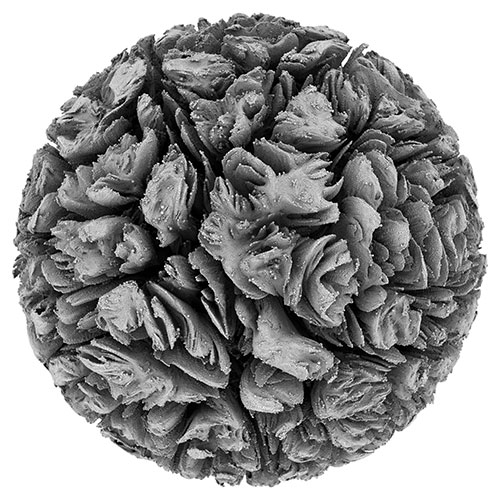


Andy Lomas
"Morphogenetic Creations"
January 9-March 1, 2014
Reception January 9, 7-9pm
Andy Lomas is a mathematician, digital artist and Emmy award winning supervisor of computer generated effects. In these works he explores the nature of complex forms that can be produced by digital simulation of growth systems. These start with a simple initial form which is incrementally developed over time by adding iterative layers of complexity to the structure.
The aim is to create structures emergently: exploring generic similarities between many different forms in nature rather than recreating any particular organism. In the process he is exploring universal archetypal forms that can come from growth processes rather than top-down externally engineered design.
The Aggregation and Flow series use a system of growth by deposition: small particles of matter are repeatedly deposited onto a growing structure to build incrementally over time. Rules are used to determine how new particles are created, and how they move before being deposited. Small changes to these rules can have dramatic effects on the final structure, in effect changing the environment in which the form is grown.
The Cellular Forms use a more biological model, representing a simplified system of cellular growth. Structures are created out of interconnected cells, with rules for the forces between cells, as well as rules for how cells accumulate internal nutrients. When the nutrient level in a cell exceeds a given threshold the cell splits into two, with both the parent and daughter cells reconnecting to their immediate neighbours. Many different complex organic structures are seen to arise from subtle variations on these rules, creating forms with strong reminiscences of plants, corals, internal organs and micro-organisms.
All the software used to create these works was written and designed by the artist. First a digital simulation process is run which executes the growth rules to create a data set that represents the form. This is followed by a rendering stage that takes the data produced by the simulation and creates visible images. Both of these processes are data intensive, making extensive use of the incredible potential computational power available in digital technology, such as by directly programming graphics processing units to make use of massively parallel techniques for the simulations and rendering using ray tracing.
Andy has also created his own software to explore the enormous range of possibilities offered by the systems he writes, allowing an exploration led by aesthetic rather than conventional scientific criteria.
.
This site and its entire contents © 2004-2013 Los Angeles Center For Digital Art
All Rights Reserved.
Works of individual artists remain the intellectual property and are copyrighted by their respective authors. No unauthorized reproduction, all rights reserved.
|
|


